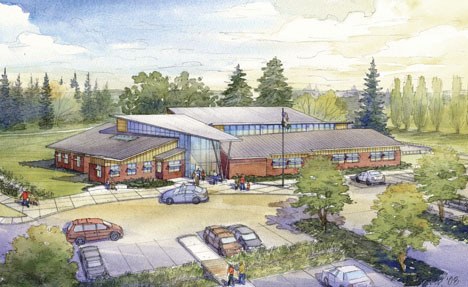Auburn City Council members on Monday gave Mayor Pete Lewis the go-ahead to apply for a Housing and Urban Development (HUD) Section 108 loan of up to $2,033,715 to help build a 20,100-square foot Auburn Community Center and an associated activity center in Les Gove Park.
The vote was 6-1, with Councilwoman Virginia Haugen alone voting no. Haugen, who has been highly skeptical of the overall $12.7 million project, insists that the City doesn’t have the money, especially during the current recession.
Plans also call for an activity center-gymnasium on the park’s north end, in part a remodeling of the current Auburn Parks, Arts and Recreation Administration Building.
City Councilman Rich Wagner, who chairs the Community Center Committee, said the City would repay the HUD loan at $150,000 a year over 20 years using the $400,000 it receives through annual community development block grants (CDBG). The CDBG funds have to be used for construction of community facilities.
Based on population, CDBG has been a source of about $450,000 per year for the past 10 years and that amount is expected to climb to about $600,000 when the federal government takes into account Auburn’s newly annexed population, Wagner said. This allows $150,000 to be used for the loan repayment without reducing the amount that local non-profit agencies like Auburn Youth Resources have historically received in funds from the City’s CDBG allocation.
Based on how the final plans shake out for both the community center and the activities center, the City can choose to accept or decline the loan even after the application is submitted and HUD authorizes the loan.
Coming up with $12.7 million in the middle of a recession is a tough proposition. The solution, said Wagner will be to draw from multiple sources but leave the taxpayer-supported general fund that pays for most of Auburn’s daily operations untouched.
Here is the funding plan:
• $3.3 million real estate excise tax. Anyone who sells real estate in the city pays this 0.25 percent tax, and the City can only use the money for construction. Sellers must pay additional elements of the tax, some of which have fewer restrictions on their use but most of that goes to the state. The City has received about $1 million in revenue each year for the past 10 years, but during the recession it is receiving about half of that. For the past eight years, the City has put most of that amount into a savings fund for a community center.
• $500,000 from solid waste utility fees. For decades, the City maintained a $1 million reserve in the solid waste fund in case the contracted garbage collection company failed to perform, for example because of labor strikes. The City kept the reserve so it could operate its own collection service for a period of time if that proved necessary.
“It has been determined that $500,000 is sufficient to allow for this contingency,” Wagner said. “Since all Auburn citizens have paid into this solid waste fund through their garbage bills over the years, and all of the Auburn citizens will benefit from the community center, it was determined that this fund transfer made sense to return value to the citizens rather than keep an abnormally large reserve fund.”
• $3,500,000 new market tax credits (NMTC). This is a complex federal “grant” process where a bank makes a loan for the project that the City does not have to repay. Instead, the federal government allows the bank seven years worth of income tax credits so it can recover the cost of the loan plus a reasonable amount of interest. Through the terms of the NMTC program, the City and or a newly created NMTC ownership entity will own the property and build the community center and activities center.
• The $1.9 million Boys & Girls Club contribution to the Activity Center, which is 50 percent of the cost of the building. The City is negotiating this agreement, which will allow the club 50 percent of the use of the building.


